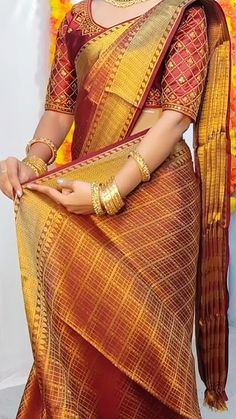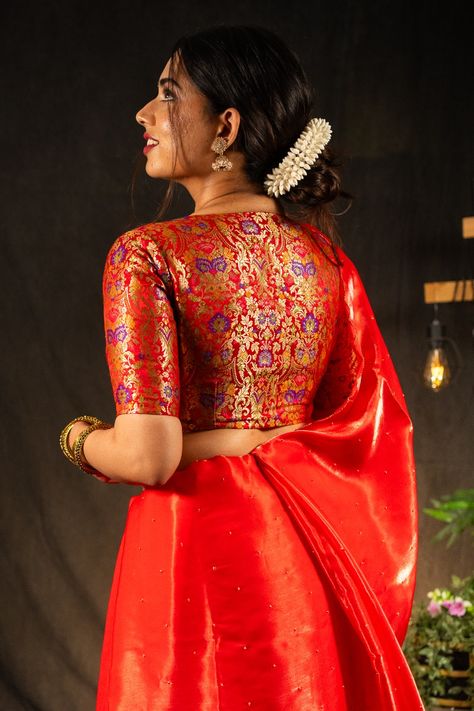Saree Draping
The saree, a quintessential Indian garment, is more than just a piece of fabric; it is a symbol of tradition, culture, and timeless elegance. Worn by women across India and beyond, the saree is versatile, flattering, and embodies the rich heritage of Indian textiles and craftsmanship. Central to the beauty of the saree is the art of draping, where the fabric is skillfully arranged and pleated to accentuate the wearer’s figure while showcasing intricate designs and motifs. In this class note, we will explore the various styles and techniques of saree draping, celebrating its diversity and cultural significance.

History and Significance of the Saree: The origins of the saree can be traced back thousands of years, with references found in ancient Indian texts and sculptures. Throughout history, the saree has been worn by women of different regions, religions, and social backgrounds, evolving in style, fabric, and draping techniques. It has remained a symbol of femininity, grace, and tradition, transcending generations and geographical boundaries. The saree holds immense cultural significance, worn on special occasions such as weddings, festivals, and religious ceremonies, as well as in everyday life, symbolizing grace, dignity, and cultural identity.
Materials and Fabrics: Sarees are crafted from a wide range of materials and fabrics, each with its unique texture, drape, and aesthetic appeal. Some of the most common fabrics used in saree making include:
- Silk: Silk sarees are prized for their luxurious texture, vibrant colors, and intricate designs. Varieties such as Kanjivaram, Banarasi, and Tussar silk are renowned for their craftsmanship and cultural heritage.
- Cotton: Cotton sarees are lightweight, breathable, and ideal for everyday wear. They come in a variety of weaves and prints, including handloom varieties such as Chanderi, Maheshwari, and Tant sarees.
- Chiffon and Georgette: Chiffon and georgette sarees are known for their fluid drape and sheer texture, making them popular choices for evening wear and formal occasions.
- Crepe: Crepe sarees have a distinctive crinkled texture and are prized for their elegant drape and wrinkle-resistant properties. They are often embellished with embroidery, sequins, or beadwork for added glamour.
- Linen: Linen sarees are lightweight, breathable, and perfect for hot and humid climates. They are prized for their natural texture, earthy tones, and understated elegance.

Styles and Techniques of Saree Draping: The saree can be draped in numerous styles, each reflecting regional traditions, cultural influences, and personal preferences. Some of the most popular saree draping styles include:
- Nivi Style (Gujarati/Pallu Style): The Nivi style is the most common and widely practiced method of saree draping, originating from the Indian state of Andhra Pradesh. In this style, the saree is wrapped around the waist, with pleats neatly arranged and tucked into the petticoat. The loose end, known as the pallu, is draped over the left shoulder and often adorned with decorative borders or motifs.
- Bengali Style (Atpoure Shari): The Bengali style of saree draping is characterized by its elaborate pleating and distinctive pallu placement. The saree is wrapped around the waist in an anti-clockwise direction, with the pallu draped over the right shoulder and pleated in a fan-like manner. This style is often worn during weddings, festivals, and special occasions in West Bengal and Bangladesh.
- Maharashtrian Style (Nauvari Saree): The Maharashtrian style of saree draping, also known as the Nauvari saree, is unique in its nine-yard length and traditional drape. The saree is wrapped around the waist and pleated in the front, with one end tucked into the back waistband and the other draped over the shoulder. This style allows for ease of movement and is commonly worn by women performing folk dances and rituals in Maharashtra.
- Gujarati Style (Seedha Pallu): The Gujarati style of saree draping, also known as the Seedha Pallu style, is characterized by its back-to-front pallu drape. The saree is draped around the waist with the pallu brought across the body from back to front, draped over the right shoulder, and pinned in place. This style is popular in Gujarat and is often worn during Navratri celebrations and other cultural events.
- Tamilian Style (Madisar): The Tamilian style of saree draping, known as the Madisar, is traditionally worn by Brahmin women in Tamil Nadu. It involves wrapping the nine-yard saree around the waist, forming a single pleated drape, and securing it with a knot at the waist. The loose end is draped over the left shoulder and pinned in place, allowing for ease of movement and modesty.

Tips for Saree Draping:
- Choose the Right Saree: Consider the occasion, venue, and your personal style when selecting a saree. Choose a fabric, color, and design that complement your body type, skin tone, and personality.
- Wear the Right Accessories: Pair your saree with appropriate accessories such as matching blouse, petticoat, jewelry, footwear, and handbag to complete your look and enhance the overall elegance of the outfit.
- Ensure Proper Fit: Pay attention to the fit and length of your saree blouse and petticoat to ensure comfort, ease of movement, and a flattering silhouette.
- Practice Draping: Practice draping your saree before the actual occasion to familiarize yourself with the style, technique, and pleating process. Seek assistance from family members, friends, or professional drapers if needed.
- Experiment with Styles: Don’t be afraid to experiment with different saree draping styles, pleating techniques, and pallu placements to find what works best for you and complements your individual preferences and body shape.
Conclusion: The art of saree draping is a celebration of tradition, elegance, and diversity, reflecting the rich cultural heritage and timeless beauty of Indian textiles. From the intricate weaves of Kanjivaram silk to the fluid drape of chiffon, each saree tells a story and embodies the craftsmanship and creativity of generations. Whether worn for weddings, festivals, or everyday wear, the saree continues to captivate and inspire women around the world, transcending boundaries of time, geography, and culture. Through this class note, we hope to honor the artistry and significance of saree draping and encourage appreciation for this timeless and iconic garment.

